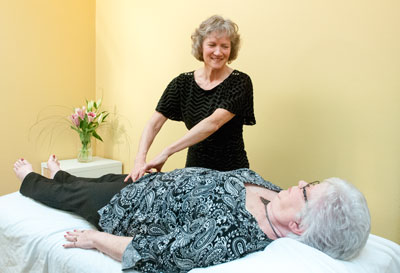Function Ability Physical Therapy
Urinary & Fecal Incontinence
Incontinence refers to uncontrollable urine, gas or fecal leakage and can be very embarrassing. Incontinence can be related to weak levator ani muscles, pelvic floor laxity, urethra sphincter instability, hypersensitivity of the detrussor muscle, trigger points in the pelvic floor muscles, excess pressure from above the pelvic organs, respiratory problems that cause repeated over-exertion, or neurological disorders.
Different Types of Incontinence
- stress urinary incontinence occurs when you sneeze, laugh, cough or exercise
- urge urinary incontinence occurs when you have an urge to void but can’t get to a toilet in time
- bladder urgency is an overactive or hypersensitive bladder and sends excess messages to the brain that there’s a need to urinate
- mixed incontinence consists of a combination of the above
- fecal incontinence is loss of gas, liquid or a solid stool
- bladder retention is when a person has a delay in voiding
- nocturnia is when you have to urinate one or more times per night
- neurogenic bladder is an overactive or underactive bladder in someone with neurological deficits (ie., multiple sclerosis, Parkinson’s disease, etc.).

Contributing factors for incontinence are constipation, pelvic surgeries, pelvic pain, aging, trauma, childbirth, and pelvic organ prolapse. Co-occurring factors that are considered include obesity, chronic cough, diabetes, repetitive lifting, abdominal bloating, high impact exercises, decreased urethral striated muscle, decreased estrogen, and neurological dysfunction.
Pelvic organ prolapse is another condition where the pelvic organs drop in the vagina and may protrude out of the vagina. Each sub-condition refers to a different organ: cystocele, rectocele, uterine, enterocele, and urethracele. Normally this is due to a weak pelvic floor muscle and may be indirectly related to abdominal bloating, respiratory diagnoses, nerve damage, constipation, repetitive lifting, obesity, or past surgical procedures.
Physical therapy can assist in resolving the problem if the prolapse has not gone beyond the vaginal opening. Your physical therapist will determine what is causing your incontinence or pelvic organ prolapse and determine a treatment plan to remediate the problem. You will learn how to perform exercises at the level right for you, which you can use at home. In addition, your therapist may use manual therapy, electrical stimulation, functional activities, behavioral modification, neuromuscular re-education, posture and gait training, and a home program.
"I’m 32 years old with no children, but I’ve been struggling with urinary incontinence for over half my life. After being sent to one urologist after another for the past five years, all of whom with no clue what to do, finally the fourth urologist suggested I try physical therapy. At this point I had just given up, but still decided to go to the first physical therapy appointment just to see what they would say. This would later prove to be the best decision I’ve made for my health and well-being thus far. Dr. Chasse and Dr. Johnson’s vast knowledge and expertise in medicine and the human body are far superior to any doctor that I have ever met in my entire life. Instead of just examining and focusing on my uterus, like the other doctors, they thoroughly examined my entire body. To my surprise, they were able to quickly and accurately diagnose everything that was wrong with my body from head to toe and what treatments I need to do and started them that day. All in all, I would recommend Function Ability Physical Therapy to everyone, no matter what problem you have. If you need physical therapy, this is the place to go!"
A.M.
